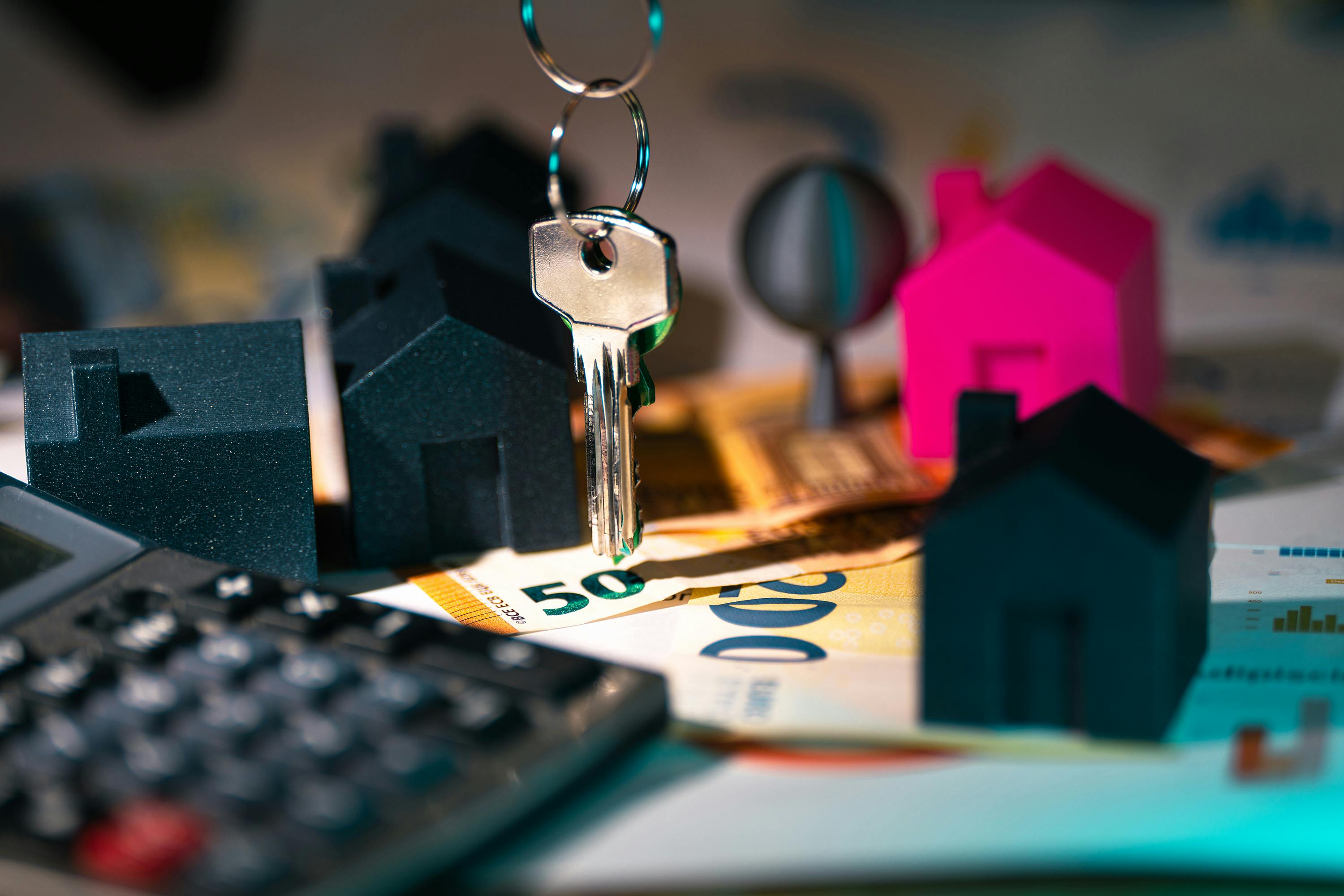March 26, 2024
What Happens When Your Broker Platform Fails?
Ever wondered what'd happen if your broker's platform took a nosedive when you're mid-trade? It's a scenario that might seem far-fetched, but it's worth considering. You're not alone if the thought sends a shiver down your spine – after all, your investments are on the line.
Imagine logging in to find that your go-to for trading has suddenly gone AWOL. It's crucial to know the ins and outs of this potential hiccup. Why? Because being prepared could save you more than just a headache. Let's dive into what you can do to safeguard your investments if your broker goes down.
Possible Consequences of Broker Platform Failure

Imagine you're in the middle of a crucial trade and suddenly your broker's platform blinks out. It's like being in a high-stakes game of musical chairs and the music just stops. Only this silence could cost you. Let's break down what could happen when a broker's platform fails—and it's essential to understand these points without any financial jargon getting in the way.
Trade Execution Delay or Failure
First off, if your platform goes down, any trades you were attempting might be delayed or fail to execute. This is like trying to score a goal in football, but the net suddenly disappears. Not ideal, right?
Missed Opportunities: You miss out on the chance to buy or sell at the ideal price.
Slippage: If the trade processes later, it might be at a worse rate. That's like finally getting that net back, only to find the opposition has now got one over on you.
Financial Loss
The most obvious consequence is financial loss. Imagine planting seeds in a garden but not being able to water them half the time. Sometimes those seeds might still grow, but more often, they won't flourish as you'd hoped.
Lack of Access to Funds
Access to your funds could get locked during an outage. That's akin to having your cash stuck in a piggy bank with no way to get it out—frustrating and potentially problematic if you need that money asap.
Market Data Discrepancies
Without a functioning platform, keeping track of market data is a challenge. It's like trying to cook a complex dish with an unpredictable timer. You could end up undercooking some investments and burning others.
Damaged Investor Confidence
Lastly, the uncertainty that comes from such incidents can shake your confidence. It's like getting back on a bike after a fall; even if the bike's fine, you might be a bit hesitant.
Here's the kicker—you can't prevent these platform outages, but you can prepare for them. This means having backup plans and knowing your broker's policies inside out. It's about wearing that helmet and pads before you get on the bike. You hope you won't need them, but you're sure glad they're there when you do.
Impact on Trading Orders and Positions
When your broker's platform goes down, it's like a main road in your town being blocked off without warning; you're forced to take detours, and there’s a chance you might be late or entirely miss key appointments. Such an outage means trading orders and open positions could be severely disrupted.
Picture this: you've set up a stop-loss order to protect yourself from market dips, but if that stop-loss doesn't execute due to a platform failure, your routine safety net disappears. This event could lead to significant financial impact, particularly in volatile markets.
Delayed Execution: Trades you've keyed in might face delays, throwing off your strategy timing.
Missed Orders: Buy or sell orders might not go through at all, causing you to miss potential profits.
Unclear Position Status: With the platform down, you might not be able to check whether you're in the red or black at critical moments.
Let's touch on the "unfilled orders". It’s like having your cash tied up when you’d rather have it bustling around in the markets, working for you. When the platform is back up, those orders might be filled at less than ideal prices, affected by what’s known as slippage.
Here's what you can do:
Multiple Platforms: Use more than one platform to diversify access points.
Direct Line to Brokers: Having a direct phone line to your broker can be your plan B.
Manual Execution: Know how to execute trades manually if electronic systems fail.
Keeping an eye on these areas ensures you've got a handful of aces up your sleeve if ever the digital world takes a pause. Stay connected with alternative access routes and direct broker communication to navigate the unpredictable terrain of trading when technology takes a hit.
Access to Account Information and Funds
When trading, you count on accessing your account info and funds quickly. Like a master chef needs their ingredients at their fingertips, you need your financial details and capital ready for action. If your broker's platform goes down, it's akin to the chef's pantry being locked in the middle of service – both inconvenient and disruptive.
One of the most pressing concerns is the immediate access to your account balance and portfolio. Typically, you'd log in to check your positions, assess your cash balance, and make swift decisions. However, if the system crashes:
You can't ascertain your account balance.
Portfolio values may be inaccurate or not visible.
Real-time updates on your holdings are interrupted.
Let's say you're on the brink of placing a crucial trade when the platform fails. Now, not only has your trade been halted, but you're also in the dark about its impact on your capital or strategy.
What's worse, withdrawing funds or transferring to another account becomes challenging. It's a bit like trying to reach your money in a bank vault with no one to open it for you. This can be distressing if you need liquidity for other investments or emergencies.
Direct Debits and Automated Withdrawals are another area of concern. If you've set up recurring payments linked to your trading account, these may fail if the broker's system can't process them.
So, what can you do to mitigate such risks? Here are some steps:
Maintain records of your account details and backup documentation.
Know the alternative ways to access your account, like mobile apps or phone banking, if the main platform is down.
Establish a robust relationship with your broker so you can get updates and execute trades via direct contact if necessary.
Navigating the digital terrain of trading means being prepared for these hiccups. Diversify your strategy, keep abreast of your account status, and maintain open lines of communication with your broker. By doing so, you'll bolster your resilience against platform downtimes.
Risks to Personal and Financial Data
Imagine the chaos when a broker platform crashes, and you're flying blind, unable to access your vital information. Your personal and financial data are at tremendous risk during a platform failure. You've got to consider the possibility that sensitive details might become compromised or lost.
Think of your data as passengers on a digital cruise ship. If that ship hits an iceberg, a.k.a. platform malfunction, there's a chance of personal data getting scattered in the icy waters of the digital ocean. Here's what could happen:
Unauthorized Access: Just like a house left unlocked, a malfunction could potentially leave your data vulnerable to cyber-attacks.
Data Corruption: Ever played a game of telephone? A disrupted platform can pass on erroneous or corrupted information, garbling your financial picture.
Permanent Data Loss: Imagine losing your prized family photos in a hard-drive crash—now swap those photos with your trading history. Yep, it could vanish.
Avoiding these disasters isn't just luck; it's about being streetwise with your digital life. Here's what you can do to protect yourself:
Two-Factor Authentication: Like a double-locked door, it bolsters your initial security defences.
Regular Data Backup: Consider it the lifeboat for your digital cruise ship, keeping a safe copy of your information stashed away.
Strong Passwords: Not just your pet's name—craft a password that mixes upper and lowercase letters, numbers, and symbols.
Each of these techniques is crucial, depending on the level and type of data you're protecting. For high-value accounts, employ all the methods, and for lower-risk accounts, simpler protections might suffice.
Incorporating these safety measures is akin to fastening your seatbelt. It doesn’t guarantee you won’t crash, but it certainly ups your chances of walking away unscathed. Start with the basics: strong passwords, then add on layers of security as needed. Always remember, a little digital savvy goes a long way to keep your data safe, even when the unexpected happens.
Steps to Safeguard Your Investments
When a broker platform crashes, it's like a busy shopping centre shutting down during a sale – chaos ensues and everyone's left wondering what to do next. Protecting your investments is similar to putting on a lifejacket before boarding a boat; you hope you won't need it, but it's essential for staying afloat if trouble arises.
Regularly Update Your Contact Information with your broker. It’s akin to keeping your emergency contacts on speed dial. Should anything go awry, you need to ensure they can reach you without delay.
Keep Records of Your Account Details and Holdings. Consider this your financial diary. If your platform's down and you can't access your account online, having a hard copy ensures you're not left in the dark about what you own.
Here's a common mistake – placing all your eggs in one basket. Don't rely solely on the broker's digital records. Instead:
Save monthly statements
Print out a list of your investments
Keep a log of your transaction history
Diversification isn't just for assets; it applies to platforms too. Using Multiple Trading Platforms offers a back-up plan. Think of it as having spare keys; if one key's lost, you've got another ready to unlock your door.
Engage in Manual Record-Keeping as well. This means jotting down key trade details yourself. When technology fails, your handwritten notes could be the only record of your recent transactions.
Remember the adage, "forewarned is forearmed." Subscribe to Alerts and Notifications – they’re like smoke detectors for your portfolio, giving you an early warning in case of trouble.
Bear in mind, Regular System Checks are crucial. It's like taking your car for a service – regular maintenance can help prevent a breakdown at the worst possible moment.
Instructing a Standing Order to Transfer Funds to a safe account regularly can provide an extra layer of security. It's akin to moving valuables to a safety deposit box.
Lastly, understand that your broker's resilience plan is your safety net. Request information on their Disaster Recovery and Business Continuity Plans; this knowledge is power. It's the same as knowing the evacuation plan at a hotel. In the event of an emergency, you’ll have peace of mind knowing there's a procedure in place to protect your investments.
Conclusion
Arming yourself with the knowledge and tools to navigate a broker platform failure is crucial. You've seen how outages can wreak havoc on your trades and the importance of staying prepared. By diversifying your trading platforms, keeping a direct line to your broker, and maintaining manual records, you're setting up a safety net for your investments. Remember to update your contact details, subscribe to alerts, and understand your broker's contingency plans. These steps will help you stay in control even when the unexpected happens. Stay vigilant, stay informed, and most importantly, stay ready to act when you need to protect your financial interests.
Frequently Asked Questions
What is the benefit of using multiple trading platforms?
Using multiple trading platforms can provide redundancy, reducing dependency on a single platform and lessening the impact of any one platform's failure.
Why should I set up alerts and notifications for my trading account?
Setting up alerts and notifications helps you stay informed about your trades and account status, especially during platform outages.
How often should I conduct system checks on my trading setup?
Regular system checks can ensure that your trading setup is functioning properly and help you to identify potential issues before they cause problems.
What is the purpose of instructing standing orders to transfer funds to a safe account?
Such standing orders can protect your funds by automatically transferring them to a pre-designated safe account in the event of a trading anomaly or platform issue.
Why is it important to understand my broker's resilience plan?
Understanding your broker’s resilience plan can help you prepare for platform outages and know the procedures to follow, potentially minimizing the impact on your investments.
Similar articles

February 21, 2025
Established fact that a reader will be distracted by the way readable content.

February 20, 2025
Established fact that a reader will be distracted by the way readable content.

February 19, 2025
Established fact that a reader will be distracted by the way readable content.


